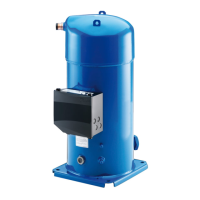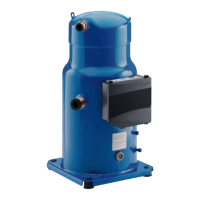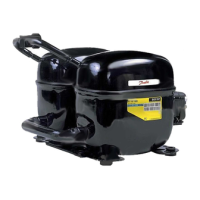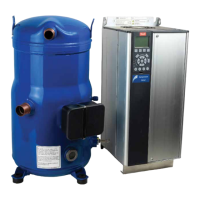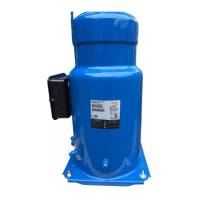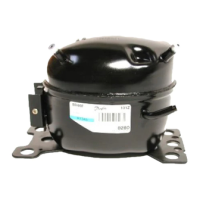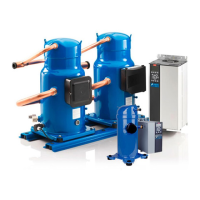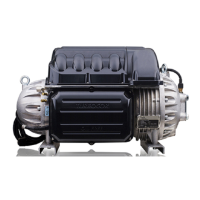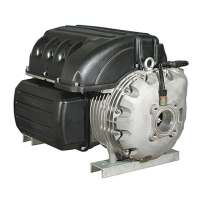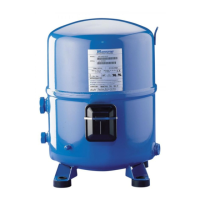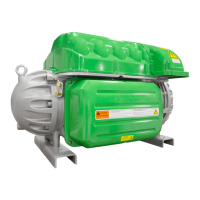34
FRCC.PC.007.B8.02
Application guidelines
Specific application recommendations
Discharge line, reversing
valve, solenoid valves
The Danfoss SH scroll compressor is a high
volumetric machine and, as such, can rapidly
build up pressure in the discharge line if gas
in the line becomes obstructed even for a very
short period of time which situation may occur
with slow-acting reversing valves in heat pumps.
Discharge pressures exceeding the operating
envelope may result in nuisance high-pressure
switch cutouts and place excess strain on both
the bearings and motor.
To prevent such occurrences, it is important that
a 1-meter minimum discharge line length be
allowed between the compressor discharge port
and the reversing valve or any other restriction.
This gives su cient free volume for the discharge
gas to collect and to reduce the pressure peak
during the time it takes for the valve to change
position. At the same time, it is important that
the selection and sizing of the reversing or 4-way
valve ensure that the valve switches quickly
enough to prevent against too high discharge
pressure and nuisance high-pressure cutouts.
Check with the valve manufacturer for optimal
sizing and recommended mounting positions.
Additionally, in order to make a smooth
transition when beginning & ending defrost ,
it is recommended to stop compressors when
deciding to move 4-way valve:
• rst stop compressors
• wait 10 seconds
• move the 4-way valve
• wait 10 seconds
• restart the compressors
In applications with heat recovery or condenser
partialisation, servo piloted solenoid valve has
to be properly sized or associated with a second
small valve in parallel, in order to avoid quick
discharge pressure drops when opening. This
phenomenon could lead to hammering e ects
and create constraints on the non return valve
integrated in discharge tting (SH180 to 380).
Defrost and reverse cycle The Danfoss SH scroll compressor has the
ability to withstand a certain amount of liquid
refrigerant dynamic slug. However we advise that
the system is unloaded to the minimum capacity
step for defrost or when the cycle is reversed.
Heat pumps frequently utilize high condensing
temperatures in order to achieve a su cient
temperature rise in the medium being heated.
At the same time, they often require low
evaporating pressures to obtain su cient
temperature di erentials between the evaporator
and the outside temperature. This situation may
result in high discharge temperature; as such,
it is mandatory that a discharge gas thermostat
be installed on the discharge line to protect
the compressor from excessive temperatures.
Operating the compressor at too high discharge
temperatures can result in mechanical damage
to the compressor as well as thermal degradation
of the compressor lubricating oil and a lack
of su cient lubrication. The discharge gas
thermostat should be set to shut down the
compressor in the event discharge gas rises
above 135°C.
Discharge temperature
thermostat
Sump heaters Sump heaters are mandatory on reversible
cycle applications given the high probability of
liquid migration back to the compressor sump
during o -cycles due to the outdoor location of
most units and operations during low ambient
conditions.
start of defrost sequence end of defrost sequence
Compressors
On
O
Way valve
Position 1
Position 2
<-----------> <-----------> <-----------> <----------->
10 sec 10 sec 10 sec 10 sec
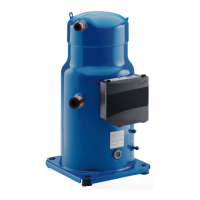
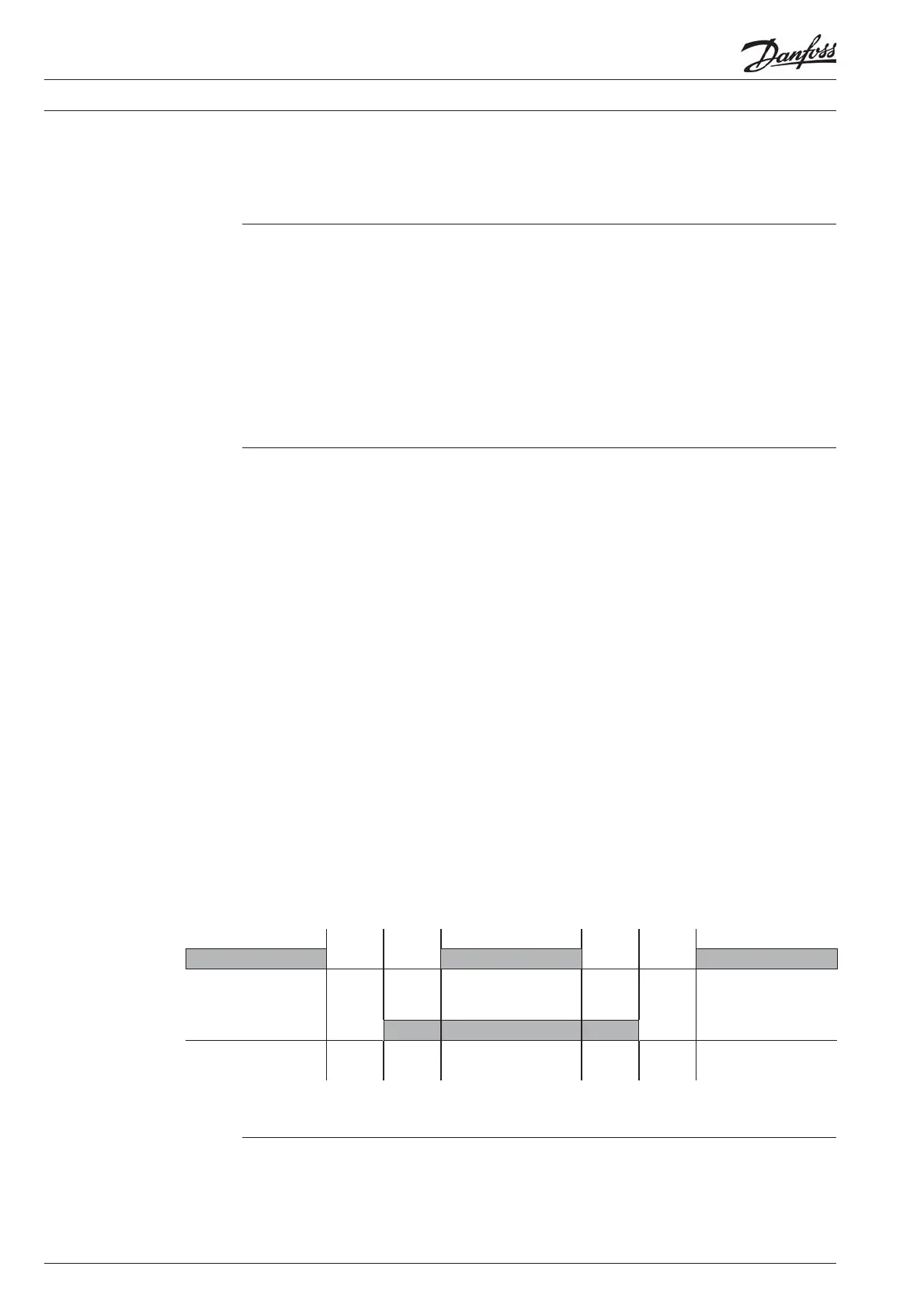